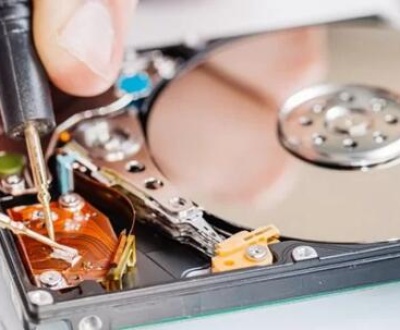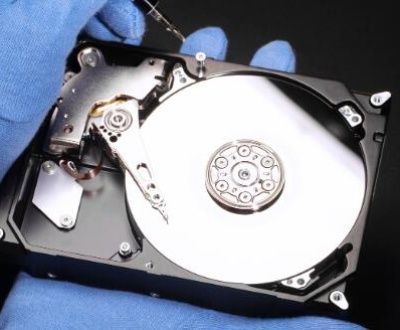Edge computing is a concept that revolutionizes data processing by bringing it closer to the source of generation. However, edge computing also presents unique challenges in terms of hardware repair and data recovery. This guide delves into the essential aspects of edge computer repair and data recovery, shedding light on the tools, techniques, and importance of addressing these issues promptly.
The Importance of Edge Computing in Modern Technology
Before diving into the repair and recovery processes, it’s essential to understand what edge computing is and its role in modern technology. Unlike traditional cloud computing, where data is sent to a centralized data center for processing, edge computing brings data processing closer to the devices and sensors that generate it. This reduces latency, improves efficiency, and enhances real-time decision-making. Edge devices can include anything from smartphones and IoT devices to local servers and smart appliances.
However, this decentralization comes with its challenges. With data being processed across multiple devices, the likelihood of hardware failure, data corruption, and other technical issues increases. This is where edge computer repair and data recovery become crucial.

Common Edge Device Failures
Edge devices are prone to various hardware and software issues that can result in the loss of data or complete malfunction. Some common types of failures include:
Hardware Malfunctions:
Hard Drive Failures: Hard drives can suffer from physical damage, such as motor failure, head crashes, or issues caused by wear and tear over time.
Processor or RAM Issues: Overheating, power surges, or manufacturing defects can cause failures in a device’s processor or RAM, leading to system crashes or data loss.
Connectivity Failures: Edge devices often rely on stable network connections. Any issues in connectivity can lead to data loss, especially when synchronization with central data storage is interrupted.
Software Failures:
Operating System Corruption: Corruption of the operating system can prevent the device from booting, making it impossible to access stored data.
File System Errors: Incorrectly shutting down or removing power from devices can lead to file system corruption, making it difficult to recover data.
Human Error:
Unintentional deletion of important files, formatting errors, or improper handling of sensitive hardware can lead to significant data loss.
Edge Computer Repair Techniques
Edge computing devices are as susceptible to malfunctions as any other piece of technology, but their decentralized nature presents unique repair challenges. Below are some of the methods used in edge computer repair:
1. Hardware Repair
Component-Level Repair: When a physical component of the edge device, such as the hard drive or processor, is damaged, component-level repair is often required. This can involve replacing faulty parts, such as soldering new connections or swapping out malfunctioning drives or memory sticks.
Motherboard Repair: In cases where the motherboard is damaged due to power surges, overheating, or liquid spills, technicians may perform chip-level diagnostics and repairs, or they may recommend replacing the entire board.
Cooling System Repair: Overheating is a common issue in edge devices due to their often remote or compact deployment. Repairing or replacing cooling fans and heat sinks can prevent further damage to sensitive components.
2. Software Repair
Operating System Reinstallation: If the operating system becomes corrupted, reinstalling it can restore functionality to the edge device. It’s important to back up critical data before taking this step, as reinstalling the OS can wipe the device clean.
Firmware Updates: Sometimes, an edge device fails due to outdated firmware. Performing a firmware update can resolve bugs, improve system stability, and ensure better performance.
Driver Reinstallation: Edge devices often require specific drivers to operate effectively. Outdated or missing drivers can lead to malfunction, which can be resolved by identifying and reinstalling the necessary drivers.
Data Recovery for Edge Computing Devices
When an edge device fails, data recovery becomes the top priority, especially for businesses relying on real-time data from IoT sensors or devices. The decentralized nature of edge computing means that data can be stored in various locations, adding complexity to recovery efforts.
1. Data Recovery from Physical Failures
Hard Drive Recovery: In cases of physical damage to the hard drive, data recovery experts often employ specialized tools to retrieve the information. This can involve transplanting the platters into a working drive or using advanced software to read data from a malfunctioning drive.
SSD and Flash Memory Recovery: Many edge devices rely on SSDs or flash memory for storage. Recovering data from these types of media is more challenging due to their structure, but specialized equipment can bypass failed components and extract data.
2. Data Recovery from Logical Failures
Corrupted File Systems: Logical data recovery methods can be used to recover data from devices with corrupted file systems or partitions. Software tools scan the storage media to identify and recover lost files.
Deleted File Recovery: When files are accidentally deleted, recovery software can be used to locate and restore them, provided they haven’t been overwritten.
RAID Recovery: Some edge computing systems use RAID (Redundant Array of Independent Disks) to enhance data reliability. If one or more disks in a RAID array fail, specialized techniques are required to recover the data and rebuild the array.
3. Cloud and Edge Integration for Data Redundancy
Edge computing often works in tandem with cloud services to provide data redundancy and backup solutions. Ensuring that critical data is backed up in the cloud can mitigate the risk of permanent data loss. In the event of a failure, data can be restored from the cloud while repairs are performed on the edge device.
Preventative Measures for Edge Device Maintenance
To minimize the risk of data loss and device failure, several preventative maintenance measures can be implemented:
Regular Backups: Set up automated backups for all edge devices. Backups can be stored on other local devices, on a server, or in the cloud. This ensures that, even in the event of device failure, important data is not permanently lost.
Firmware and Software Updates: Regularly update the software and firmware on edge devices to prevent bugs or vulnerabilities from causing malfunctions.
Surge Protection: Use surge protectors or uninterruptible power supplies (UPS) to prevent power surges or outages from damaging sensitive hardware.
Environmental Controls: Ensure that edge devices deployed in the field have adequate protection from environmental factors, such as heat, moisture, and dust.
The Role of Professionals in Edge Computer Repair and Data Recovery
While some basic troubleshooting can be done by users, professional repair and data recovery services are often necessary, particularly when dealing with complex failures or sensitive data. Data recovery professionals use specialized tools and techniques, including cleanrooms for physically damaged drives, advanced diagnostic software, and industry best practices to maximize recovery success.
It’s crucial to choose a reputable data recovery service that has experience with edge computing devices and understands the unique challenges they present.
Edge computing has revolutionized the way data is processed and utilized in real time, but it also introduces new challenges in terms of repair and data recovery. Whether dealing with physical hardware failures, software issues, or human error, having a plan in place for both repair and data recovery is essential. Businesses and individuals relying on edge devices must prioritize regular maintenance, implement preventative measures, and have access to professional services to ensure that they can quickly recover from any failures and minimize data loss.
About us and this blog
Panda Assistant is built on the latest data recovery algorithms, ensuring that no file is too damaged, too lost, or too corrupted to be recovered.
Request a free quote
We believe that data recovery shouldn’t be a daunting task. That’s why we’ve designed Panda Assistant to be as easy to use as it is powerful. With a few clicks, you can initiate a scan, preview recoverable files, and restore your data all within a matter of minutes.
Subscribe to our newsletter!
More from our blog
See all postsRecent Posts
- Data recovery salt lake city utah 2025-04-18
- Data recovery sacramento 2025-04-18
- Data recovery miami 2025-04-18

 Try lt Free
Try lt Free Recovery success rate of up to
Recovery success rate of up to









